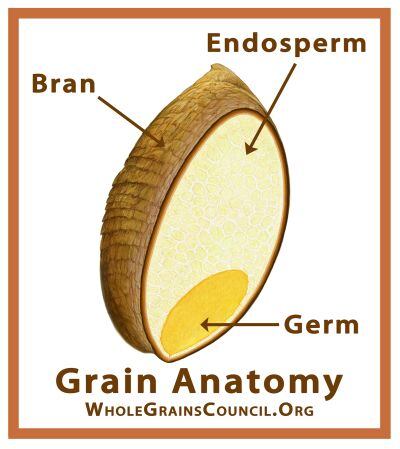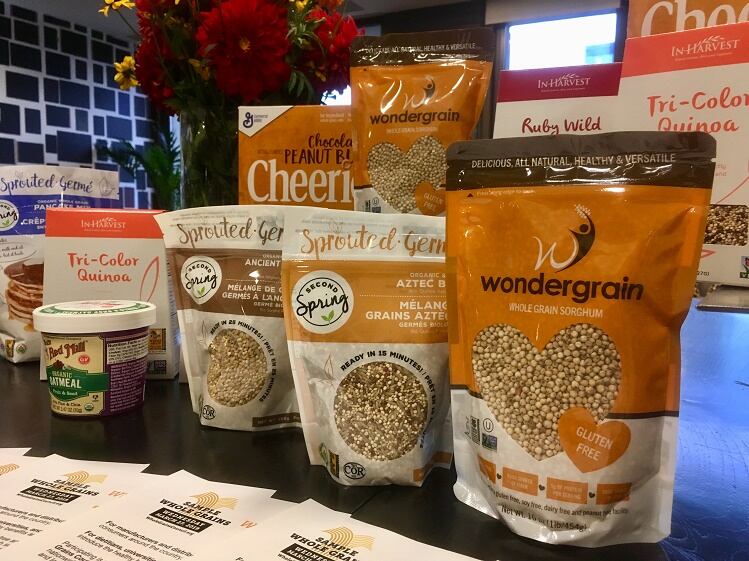While the FDA issued draft guidance on whole grain labeling in 2006 (see box below), it has yet to issue a finalized version, leaving consumers “afflicted with a lack of clarity” on the matter, claimed AND in public comments on the FDA’s nutrition innovation strategy.
Whole-grain content is not disclosed in the Nutrition Facts panel, and if ingredients lists feature a whole grain followed by multiple refined grains - which together could add up to more refined grain than whole grain – consumers would have no way of knowing that refined grain is the predominant grain, explained AND.
Even voluntary declarations typically offer only ‘grams whole grain’ without disclosing the refined grain content unless the product is 100% whole grain, it pointed out.
Clearer labels would say, for example, ‘Contains 8g whole grain and 16g refined grain,’ suggested AND, the nation’s largest organization of food and nutrition professionals.
CSPI: Consumers often cannot tell how much of the grain in a product is whole and how much is refined
In its submission to the FDA, Washington DC-based consumer advocacy group the Center for Science in the Public Interest (CSPI) also urged the agency to make whole grain labeling clearer to consumers, adding: “Unfortunately, labeling on whole grain-containing products often remains unclear or deceptive, obscuring refined-grain content and making it harder for consumers to select healthier options.”
It added: “Consumers often cannot tell how much of the grain in a product is whole and how much is refined. Hearty-looking, and sometimes artificially colored, wheat breads and multigrain breads add to the confusion, with label claims and images suggesting that they consist largely of whole grains when many are largely refined grain.”
‘Consumers have no way of knowing that refined grain is the predominant grain’
The lack of clarity on whole-grain claims has led to consumer confusion, added the CSPI: "A study* published in 2016 by the FDA in collaboration with several academic institutions showed that older adults are confused by package information on whole-grain products…
“Approximately 35% of participants could not correctly identify two whole-grain products (cereal and crackers) as whole grain, and approximately 80% could not correctly identify that the refined-grain product (bread) was not whole grain, while nearly half (46%) misidentified the refined-grain bread as whole grain.”
Consumers don’t know what multigrain means
CSPI has previously urged the FDA to address this problem by requiring firms to state whole and refined-grain content, by weight or percentage (‘80% of the grain is whole grain’) or the number of grams of both refined and whole grains per serving (‘contains 8 g whole grain and 16 g refined grain per serving’), as proposed by AND, most recently in a letter penned in 2012, noted Sarah Sorscher, CSPI's deputy director of regulatory affairs.
Such declarations should appear on any food making a claim that includes terms such as ‘wheat,’ ‘whole wheat,’ ‘whole grain,’ ‘made with whole grain,’ or ‘multigrain’ – which many consumers believe means whole grains, said the CSPI.
Oldways: Foods that contribute 8g+ whole grain per serving should be able to make factual statements such as 14g whole grain per serving
In its comments to the FDA, Oldways (which runs the Whole Grains Council) urged the agency to approve the use of terms such as ‘100% whole grain’ or ‘100% whole wheat’ on foods where all the grains in a given product are whole grains, and the food also contains at least 16g of whole grain per labeled serving.
FDA should allow the term ‘whole grain’ in the product name (eg. whole grain crackers) when at least 50% of the grain by weight is whole grain, and the food also contains at least 8g whole grain per serving (consistent with USDA’s definition of whole grain-rich foods), added Oldways.
Finally, FDA should allow foods that contribute 8g+ per serving to make factual statements such as 14g whole grain per serving’ but says such foods should not be allowed to use ‘whole grain’ or similar terms in their names.
However, it does not propose that firms should label refined grain content, or express whole grain content as a percentage of total grain content.
Nutrition director Kelly Toups added: "At Oldways and the Oldways Whole Grains Council, we are certainly in favor of helping give consumers the information they need to choose foods with more and more whole grains. For this reason, we introduced the Whole Grain Stamp in 2005."
Should flax, soybeans, etc be considered ‘whole grains’?
Addressing some industry stakeholders that believe a wider group of seeds and legumes should considered to be whole grains, Oldways argued that the list of foods considered whole grains should “include amaranth, barley, buckwheat, corn, millet, quinoa, rice, rye, oats, sorghum, teff, triticale, wheat and wild rice.”
However, “Other foods such as legumes, oilseeds, and roots shall not be considered whole grains,” said the non-profit, which said FDA may find it useful to reference a European definition of whole grain, developed by the Healthgrain Forum.
This allows for temporary separation of whole grain constituents during processing for later recombination, provided the proportions of the germ, endosperm and bran are the same or virtually the same as in the original grain and allows for removal of the very outer bran layer – up to 10% of the bran or 2% of the grain – to minimize levels of undesirable substances such as bacteria, molds, agrochemicals and heavy metals.
* Violette C, Kantor MA, Ferguson K, Reicks M, Marquart L, Laus MJ, Cohen N. ‘Package Information Used by Older Adults to Identify Whole Grain Foods.’ Journal of Nutrition in Gerontology and Geriatrics. 2016; 35:2; 146-160.

The 2015 Dietary Guidelines for Americans recommend Americans consume at least half of all grains as whole grains.
- Whole grains include the entire grain seed (kernel), which consists of bran, germ, and endosperm.
- Refined grains have been milled to remove the bran and germ, which creates a finer texture and improves their shelf life, but also removes dietary fiber, iron, and B vitamins.
- Enriched grains are grain products with B vitamins and iron added.
FDA draft guidance:
In its 2006 draft guidance on whole grain labeling, which has yet to be finalized (although the FDA does sometimes reference it in warning letters), the FDA said manufacturers may make factual statements about the whole grain content of their products, including for example, '10 grams of whole grains' and '100% whole grain oatmeal,' provided those statements are not false or misleading and do not imply a particular level of whole grain (e.g., high or excellent source).
The FDA added: "We recommend that pizza that is labeled 'whole grain' or 'whole wheat; only be labeled as such when the flour ingredient in the crust is made entirely from whole grain flours or whole wheat flour, respectively. Similarly, we recommend that bagels, labeled as 'whole grain' or 'whole wheat' only be labeled as such when bagels are made entirely from whole grain flours or whole wheat flour, respectively."
Oldways director of nutrition Kelly Toups, MLA, RD, LDN, told us: "We are not aware of a timetable for releasing final guidance. The FDA's Nutrition Innovation Strategy appears to cover a lot of ground, so it is definitely possible that they may be exploring finalizing whole grain guidance as a part of this initiative. Much of our comments to the FDA focused on this possibility."

